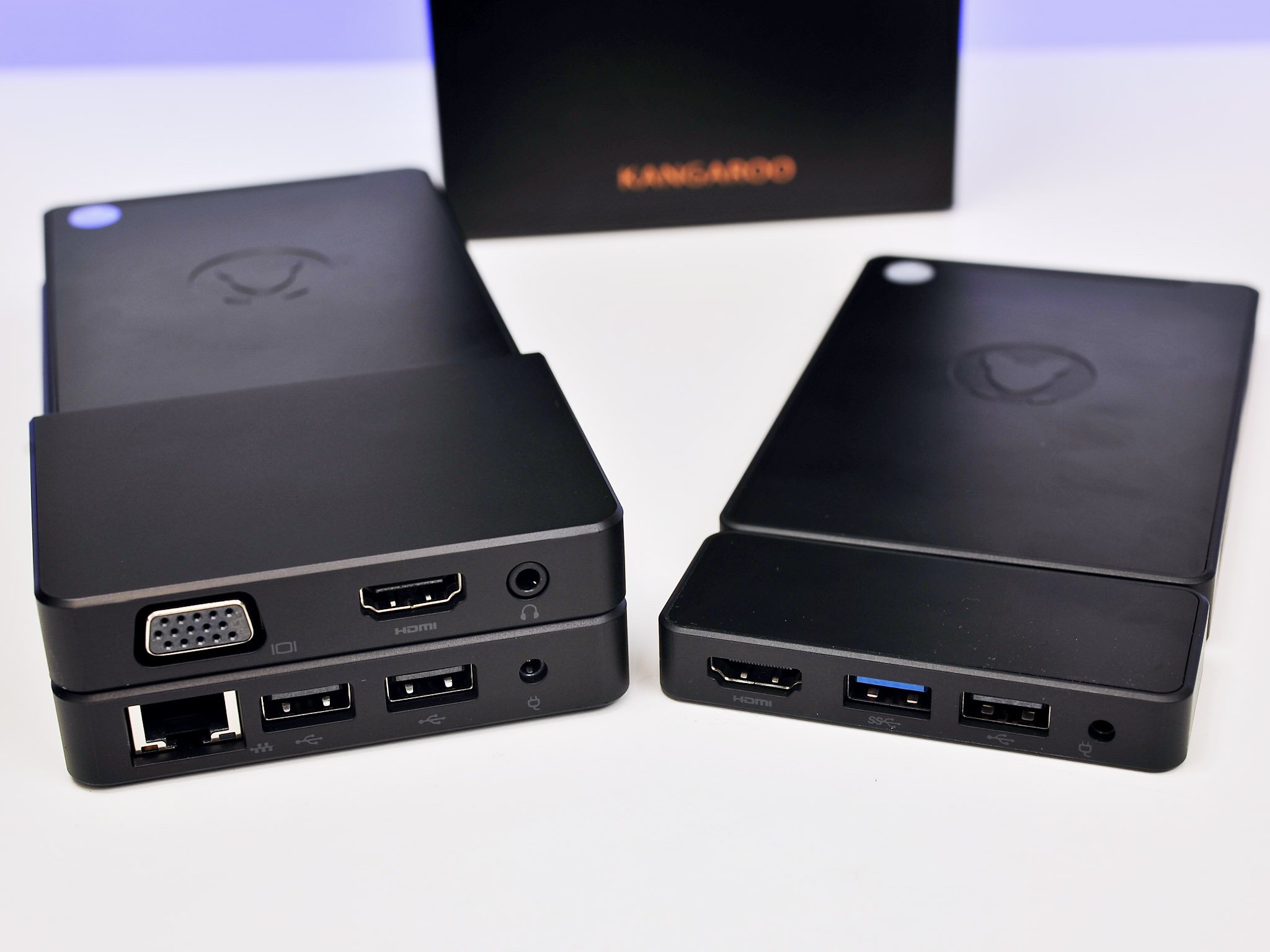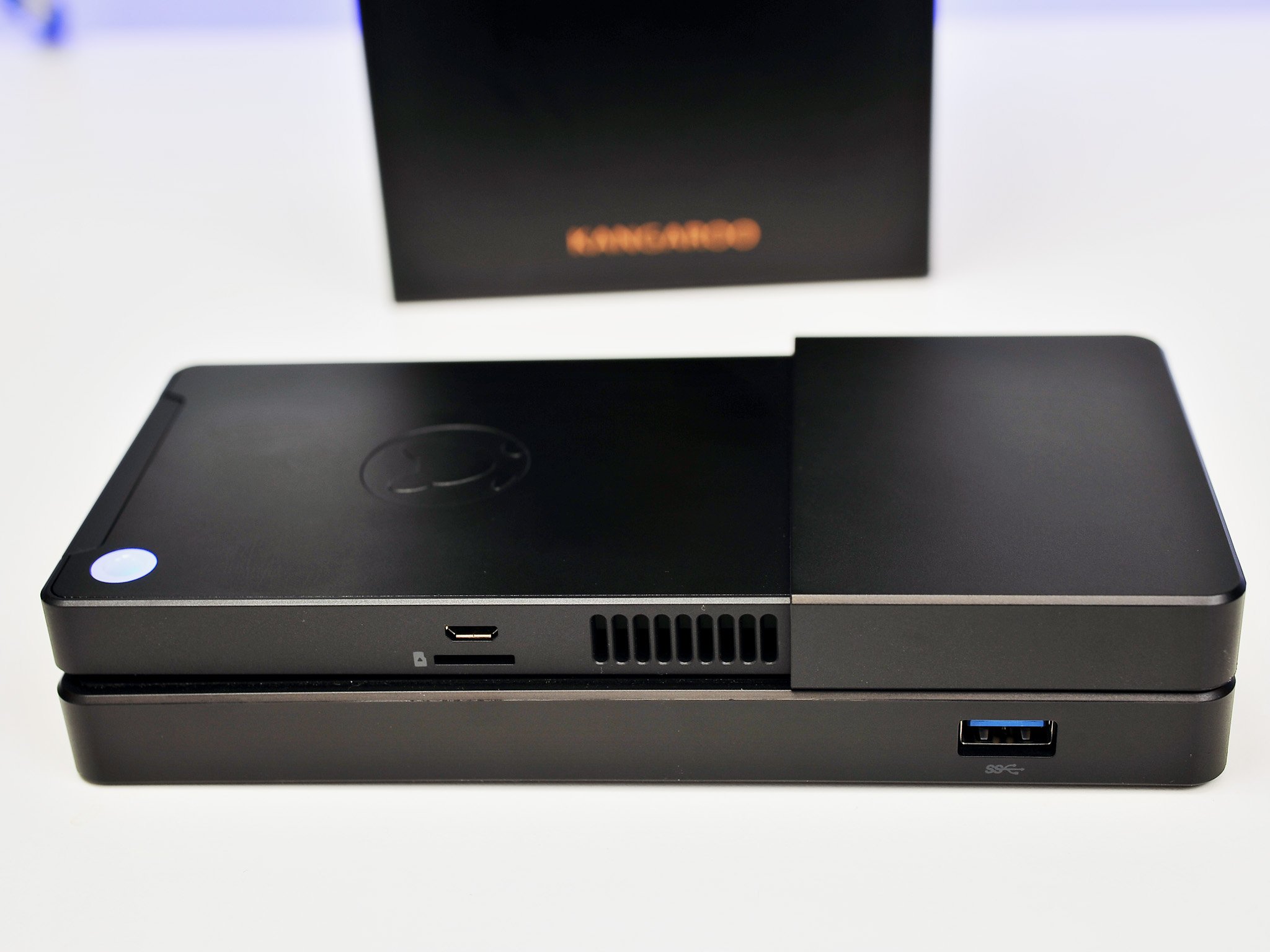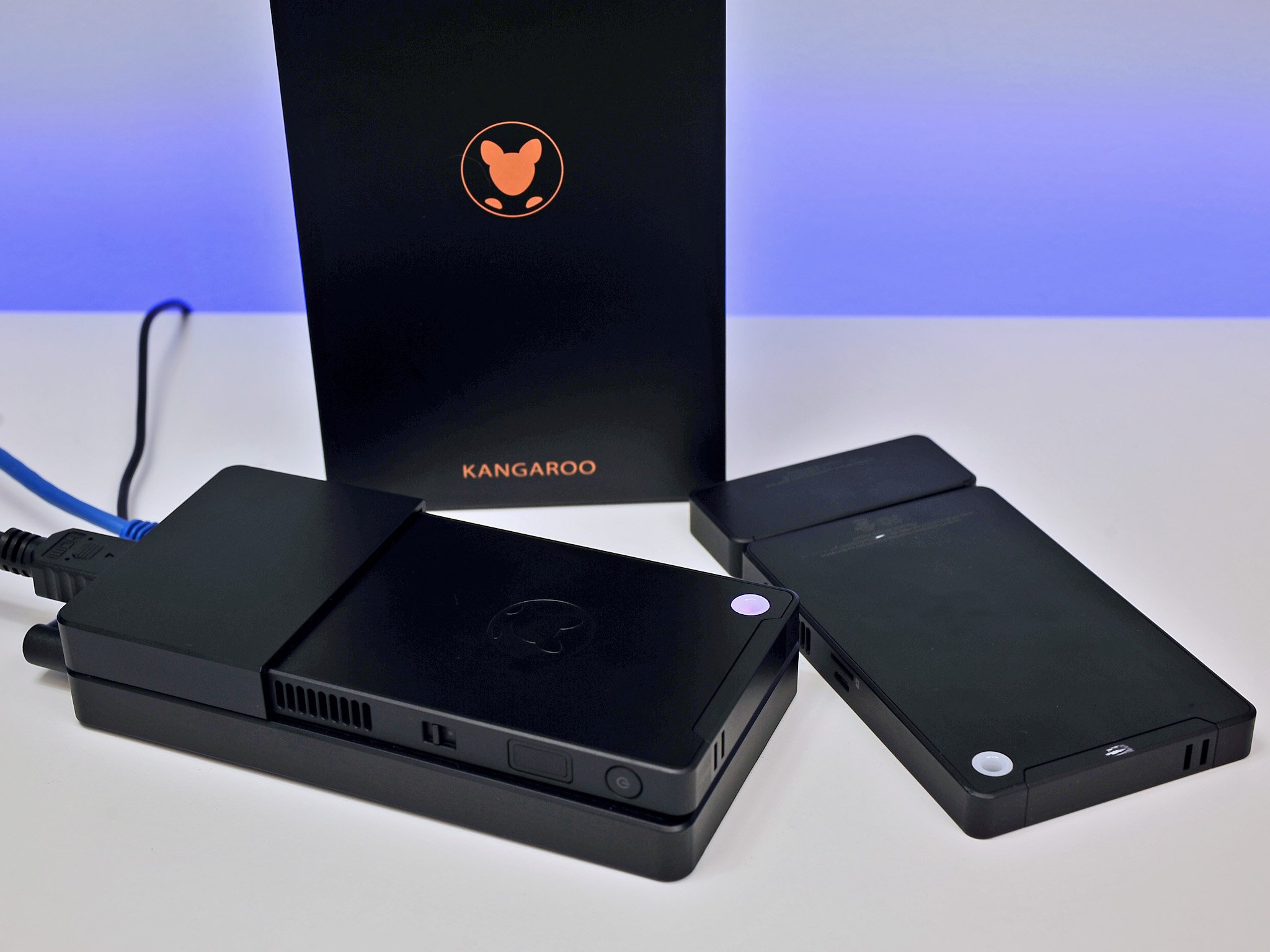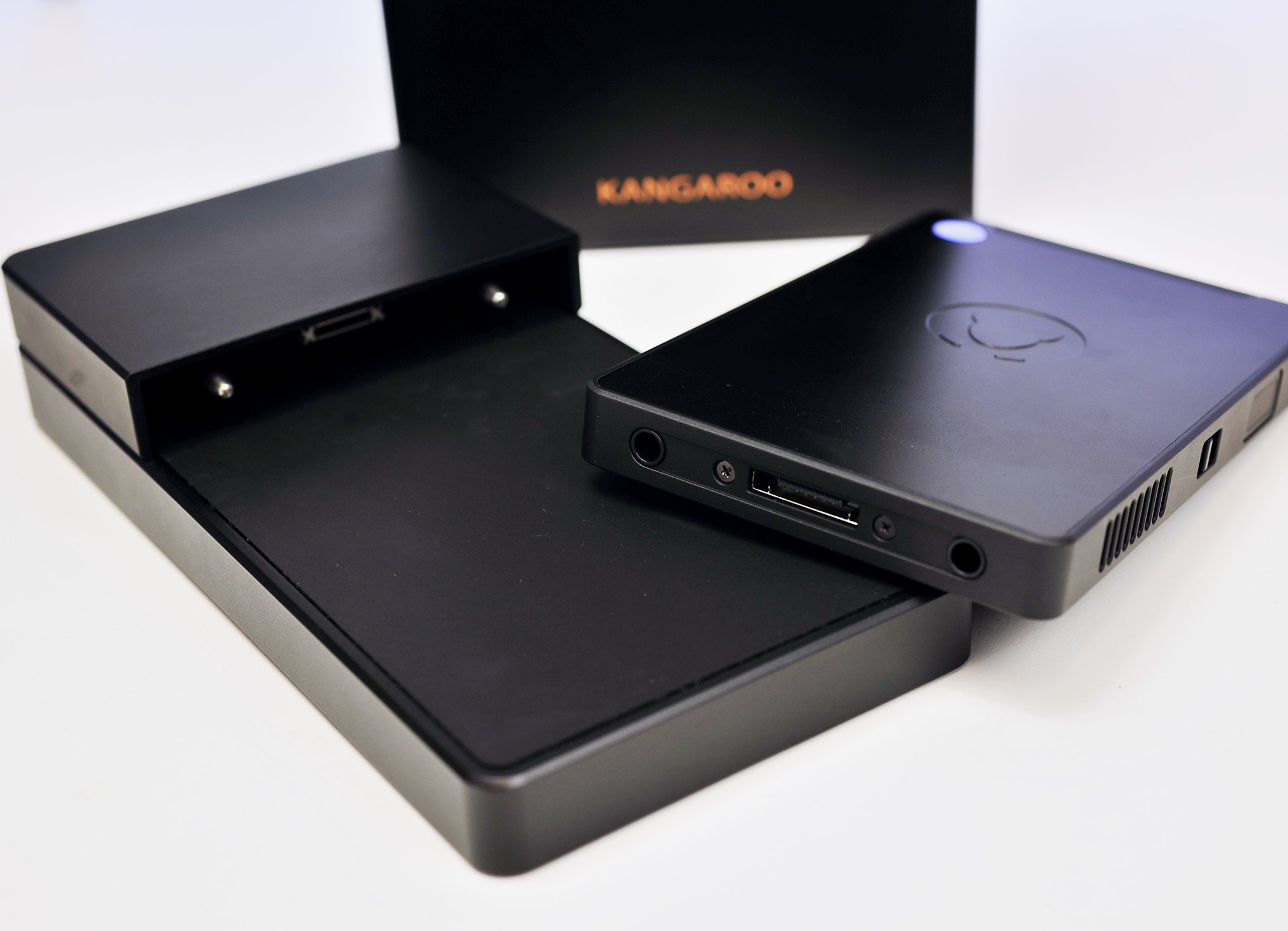Kangaroo Mobile Desktop Pro review: Can a $199 pocket PC be fun?

When we reviewed the $99 InFocus Kangaroo Mobile Desktop PC, which is part of this new wave of tiny, pocketable and modular Windows 10 computers, we found a machine full of portability and promise. Now, InFocus is back with a new model called Kangaroo Mobile Desktop Pro that sells for $199.
So how is it? I've had a chance to play around with one for the last week and here are my thoughts. Also, I'll break it down as to what is different with the Pro version.
Hardware and Features Comparison
On paper, the Kangaroo Mobile Desktop and Kangaroo Mobile Desktop Pro are identical save for the addition of the new Pro Dock. It is that latter part where the extra $99 goes, and it will matter for many people looking for a portable PC.
Here is a feature comparison chart.
| Category | Mobile Desktop | Mobile Desktop Pro |
|---|---|---|
| CPU | Intel Atom x5-Z8500 1.44 GHzTurbo Boost up to 2.24 GHz | Intel Atom x5-Z8500 1.44 GHzTurbo Boost up to 2.24 GHz |
| RAM | 2GB LPDDR3 | 2GB LPDDR3 |
| Storage | 32GB eMMC | 32GB eMMC |
| Graphics | Intel HD Graphics Gen8 (Up to 600Mhz) | Intel HD Graphics Gen8 (Up to 600Mhz) |
| Wireless | Wi-Fi 802.11ac (Dual Band)Bluetooth 4.0 | Wi-Fi 802.11ac (Dual Band)Bluetooth 4.0 |
| Windows Hello | Finger Print Reader | Finger Print Reader |
| Battery life | 4 hours (casual use)2200 mAh lithium-ion | 4 hours (casual use)2200 mAh lithium-ion |
| Ethernet port | No | Yes |
| HDMI Out | Yes | Yes |
| VGA Out | No | Yes |
| USB 3.0 | x1 | x1 |
| USB 2.0 | x1 | x2 |
| Audio Port | No | Yes |
| HDD Bay | No | Yes |
| Expansion | microSD TF slotSupports SDSC, SDHC and SDXC formats | microSD TF slotSupports SDSC, SDHC and SDXC formats |
| Weight | PC only: 5.80 oz (164.42 g)PC + Dock: 7.40 oz (209.78) | PC only: 5.70 oz (164.42 g)PC + Dock: 14.80 oz (209.78 |

So the new Kangaroo Pro earns its Pro name not so much because of improved hardware, but because there's more hardware to it. With the Pro your extra $100 gets you the following additions, which are all part of the Dock Pro:
- VGA port
- Additional USB 2.0 port
- A 2.5-inch hard drive bay
- Ethernet port
- An audio port
Of course, what is neat about the concept of Kangaroo is that InFocus could release even more modules for it so that you can build off it to make something more powerful.
Quick Review
You can watch Mark's take on the Kangaroo Mobile Desktop from February in his full write-up or watch the video of it in action below as I'll be adding to it through commentary here.
Get the Windows Central Newsletter
All the latest news, reviews, and guides for Windows and Xbox diehards.
Kangaroo Mobile Desktop review: A palm-sized PC for just $99
For the most part, the Pro version performs exactly like the non-Pro, but those extra features – especially the Ethernet port – go a long way to making this more of a "real" PC.
Out of the box, the Pro ships with Windows 10 build 10586.00, which is a very old release from last year. Luckily, I was able to connect it up to Ethernet and download the cumulative updates, which brought the version up to 10586.218. While the download went along quickly, the installation process took nearly 45 minutes due to the slow nature of the Intel Atom processor.

After the OS had been updated, I was able to set up and use the fingerprint reader to log into Windows 10 with Windows Hello. I have to admit it's a nice addition to have, even if you won't use it all the time.
While the Kangaroo can power a 4K monitor, it can only do so at 30 FPS, which is not ideal at all. However, connecting it up to a 1080P display or TV yields a quite satisfying 60 FPS. You cannot, however, power two monitors from the device.
The performance with the Atom processor and 2GB of RAM will be limiting, but we are talking about a desktop PC that can fit into a purse or large pocket — and costs less than most phones. If yoyu're running Universal Windows Apps from the Store, Office, and doing some casual gaming (e.g. Minecraft), you will not have any issue. Without a dedicated GPU from Nvidia, however, you will not be able to do anything that is graphics intensive.
Why I like the Kangaroo Pro
The Kangaroo Mobile Desktop Pro is a unique creation, but like Continuum for Windows Phone, it may be slightly ahead of the curve for many people today. Nonetheless, my mind was racing with ideas of what I could use this device for, including:
- Living Room/Bedroom – The Kangaroo works fantastic as a PC for the TV. Grab a Microsoft wireless desktop keyboard and mouse and you could use Window 10 on your 55-inch TV right from your couch. Not only does it work well, but for casual computing, it was a lot of fun too.
- Travel - With the new HDD drive bay you can put a lot of music, videos, media, documents, or whatever you want on the Kangaroo and take it with you. With the inclusion of a VGA output in addition to HDMI, you should be able to connect up to most displays with ease.
- DIY Projects - I'm not the creative type, but there are a lot of people who are, and they could use Kangaroo to build a PC into various objects or use it in unique situations. Don't forget the Kangaroo even has a built-in battery for 2 to 4 hours of usage.
You can even connect up the Kangaroo to an iOS device like an iPad, which turns your less-than-productive Apple device into a display for a full-fledged, hardworking Windows PC.
Overall, the Kangaroo was just fun to use as you can just take it with you. The idea of a tiny computer that you could hide in your entertainment system like a Roku was unheard of years ago. Now, it can be done, and no one would know it was even there.
What I don't like about it
While the Kangaroo Mobile Desktop Pro is fun to use and it has a lot of potential for creativity, the Intel Atom processor can be painful at times. While Atom is fine when running those UWP apps from the Windows 10 Store, it struggles during OS updates or even app updates.
In fact, I'll flat out say that I'm not a fan of Atom processors at all, and I'm sort of glad that Intel is pulling back on the chips. That is not to say I don't think there is a need for a low-cost Intel processor, just that current Atom processors fall short of what many consumers may want and need. Intel does have their new Skylake Core M line, which I think are fantastic, but now you are talking a slightly larger footprint, increased power needs, and higher costs.

There is also the issue of carrying input devices that always plague this and Continuum setups. While a Kangaroo fits in my bag, even a pocket in cargo pants, you still need a keyboard, mouse and a display for it. The screen problem is solved if you have a TV with exposed HDMI or VGA inputs, but the keyboard and mouse are something you will need to take along. Plus you need the micro-USB charger to power it, but it's not compatible with the micro-USB cable that you might use to charge your phone (Kangaroo's has a longer plug).
Then again, if you are planning to use Kangaroo in an office setup with those things already setup, then it's not a big deal. You could even "grab your PC" to take home, and it would be a very simple task.
Conclusion
I think InFocus is on to something with Kangaroo and the Kangaroo Pro. There is a market for a full-powered PC the size of two smartphones that can go anywhere, or be used for very minimalist office settings (you could tape it to the back of a display or the underside of the desk!).
My concern right now is the same one we had back in February: the low-end specs. Now, in fairness to InFocus, they are working with what is available to them while trying to hit certain price points. If InFocus tossed in an Intel Core M processor along with 4GB of RAM and 128GB of SSD storage, this $199 would suddenly go into the $400 or even higher. The value play then begins to drop as you could start to find laptops or traditional desktop PCs (also with no display) starting to come into view.
Regarding quality, I think InFocus did a great job. Everything from the box to the setup and the build of the Kangaroo Pro and its docks feels top notch.

Takeaway: The InFocus Kangaroo Mobile Desktop Pro is an exciting and unique addition to the changing PC landscape. It's a well-built device that fills a niche in computing and offers up unique creative abilities. While the Intel Atom processor is its only weak spot, it will only bother people who are expecting more for $199. For casual use and light gaming, the Kangaroo Mobile Desktop Pro could be a fun weekend project for the living room or bedroom.
Pros:
- A PC for anywhere in your home
- Not super expensive
- Well made and neat concept
Cons:
- May be ahead of its time for consumers
- Intel Atom processor can be slow
- Portability limited by need for a display and inputs

Daniel Rubino is the Editor-in-chief of Windows Central. He is also the head reviewer, podcast co-host, and analyst. He has been covering Microsoft since 2007 when this site was called WMExperts (and later Windows Phone Central). His interests include Windows, laptops, next-gen computing, and wearable tech. He has reviewed laptops for over 10 years and is particularly fond of 2-in-1 convertibles, Arm64 processors, new form factors, and thin-and-light PCs. Before all this tech stuff, he worked on a Ph.D. in linguistics, performed polysomnographs in NYC, and was a motion-picture operator for 17 years.
